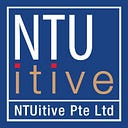This week, the spotlight shifts to one of the founding teams of the VB18 batch — EntreCity, composed of Dickson and Peter. In a nutshell, EntreCity is an innovation and enterprise (I&E) online ecosystem builder, powered by NTUitive and digital technologies. Leveraging on the key strengths of consultation and networking, EntreCity aims to equip a nation of entrepreneurs on key digital competencies to empower startup success.
After 5 months working the grind, Dickson and Peter each share their key learning points from their journey thus far.

For Peter, he recollects the hurdles faced in negotiating terms with clients and customers.
So we have a sales situation. We have the solution to solve the client’s problem. And the client, on some level, knows it. But the client is showing signs of cognitive dissonance.
What is cognitive dissonance? It is a term used to describe the mental discomfort that results from holding two conflicting beliefs, values, or attitudes.
Perhaps the client is aware to some extent that they had something of value he is looking for, but he is reluctant to admit either of the following: (a) the existence of the problem, (b) that the problem is on his side of the fence, (c) the gravity of the problem, and/or (d) that someone seemingly prejudged as inferior to him might have the solution.
Peter surmises that the problem isn’t information but desire.
Nothing trumps desire. You can have all the facts and the best arguments but it doesn’t matter when the individual desires the actualization of their own beliefs. Those who say “I want to but can’t,” are sometimes really saying, “I desire my own world view or comfort zone, more than I am willing to incur temporary pain to resolve permanent pain.”
Peter comes to the conclusion that in order to change our desires, we have to change our behaviours, and the key motivation of changing behaviours is through relationship changes. When a critical mass of people use their collective ability to articulate the necessity to incur temporary pain, for permanent gain, the relationship between the pain point and the consumer becomes personal, hence changing the consumer’s behaviour and in return, receptivity to the new idea.
Dickson’s main learning points come from planning and scheduling. Recently, EntreCity was tasked with creating a Master Gantt Chart detailing their action plans until the end of the year. It was a daunting task especially for Dickson because he found it hard to put definite deadlines on so many variable factors.

He compared it to his previous work experience in engineering.
Back in the days when I was in the construction industry as an Engineering Consultant, the Gantt chart is a compulsory item on the agenda for every monthly progress meeting with the main contractors. In that Gantt chart excel, it was filled with a few hundred rows meant to chart out every single of activities/tasks required to build a Built-To-Order project from the ground to completion. Thinking back, that Gantt Chart was probably made possible after decades of mistakes and countless rounds of refinement.
He questioned how was he supposed to create a Gantt Chart with such details if he had never walked the path before, had never done it before, and possibly no one had ever done it before too.
The simple answer came via his mentor — use your imagination. Visualise. Put the stick in the mud and imagine how you can get there.
Dickson then shares some tips on how to refine a Gantt Chart for startups:
- Just start from somewhere. Think of what you want to achieve. How will the future look like if you were to achieve the goals that you have set for yourself? Imagine and visualise with as much detail as possible about this future world.
- Understand the reality of today. Compare today’s world with the future that you have imagined, and figure out what are the missing elements. Doing interviews and talking to as many people as possible can be extremely helpful in understanding the reality of today.
- With as many missing elements that you can identify, list down the tasks and activities that is required to get it done. Find existing processes that are similar to what you are going to do and adapt from there. Some assumptions can be used just to fill the missing gaps, but minimise the use of baseless assumptions.
- Execute the plan and adapt along the way.

